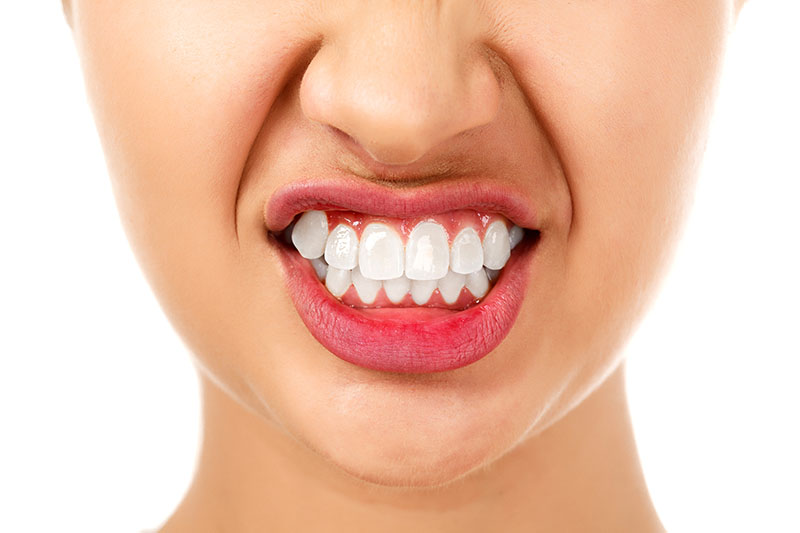
Bruxism is what dentists call teeth clenching and teeth grinding. The symptoms of bruxism are fairly easy to spot, as are the complications that can result from it. The causes of bruxism, however, a more varied and mysterious.
Teeth grinding involves the moving of teeth back and forth across each other. Most teeth grinding is unconscious and happens during sleep. Grinding is more common in children and they usually grow out of it once they’ve finished losing their baby teeth. Most adults who grind their teeth are unaware of it until a partner tells them they can hear the grinding sound while they are sleeping or their dentist spots signs of wear on the teeth (more on this later).
Teeth clenching involves tightly pressing your top and bottom teeth together. While normal eating and chewing only exerts 20 to 40 pounds of force on your teeth, the clenching that occurs in bruxism can exert hundreds of pounds force on your teeth. Clenching is also unconscious, but it can occur both while someone is awake and while they’re asleep.
Most studies and indicators tie daytime bruxism to stress. As a result, daytime clenching can often be relieved with stress reduction techniques, massage or physical therapy. Sometimes just being made aware of the clenching problem helps sufferers change their habits.
Nighttime bruxism is trickier. Because it occurs while a person is asleep, it is impossible to treat with behavioral changes. As a result, nighttime bruxism is usually treated by your dentist, often with a dental appliance referred to as a splint or a mouthguard. This is usually a custom made rubber or plastic piece that fits over your top or bottom teeth to protect them from the forces of clenching and grinding.
In the past, bruxism was linked to misaligned teeth and was sometimes treated using orthodontics (braces). However, the link between bruxism and misaligned teeth (called malocclusion by dentists) has been somewhat disproven, so orthodontic treatment for the disorder has become more rare.
Recent studies have started to link bruxism to sleep apnea, and while more study is needed on this topic, it is possible that undergoing treatment for sleep apnea by your dentist (which often involves an oral appliance of some kind) could help alleviate nighttime bruxism.
As mentioned before, while the causes of bruxism aren’t totally clear, the symptoms are. Patients usually experience one or more of these symptoms:
- Headaches, especially in the morning
- Ear pain (because of the jaw joint’s proximity to the inner ear)
- Trouble sleeping (insomnia)
- Sore jaw or full-blown TMJ disorder
- Tooth sensitivity (to hot, cold or sweet)
- Anxiety & tension
If you are experiencing any of these symptoms, you should start a discussion with your dentist about whether you have bruxism.
In addition to uncomfortable symptoms, bruxism can have consequences for the health of your teeth. Some people with bruxism don’t have any of the symptoms listed above. They are diagnosed instead by the pattern of wear that the dentist sees on their teeth during an examination. Teeth worn down from grinding or clenching can eventually crack. Bruxism can also wear away the protective outer enamel layer of the teeth, making the exposed softer dentin more susceptible to cavities. Damage or decay in your teeth could lead to pain or even tooth loss. This is why it’s important to get treated for your bruxism once you’ve been diagnosed.
